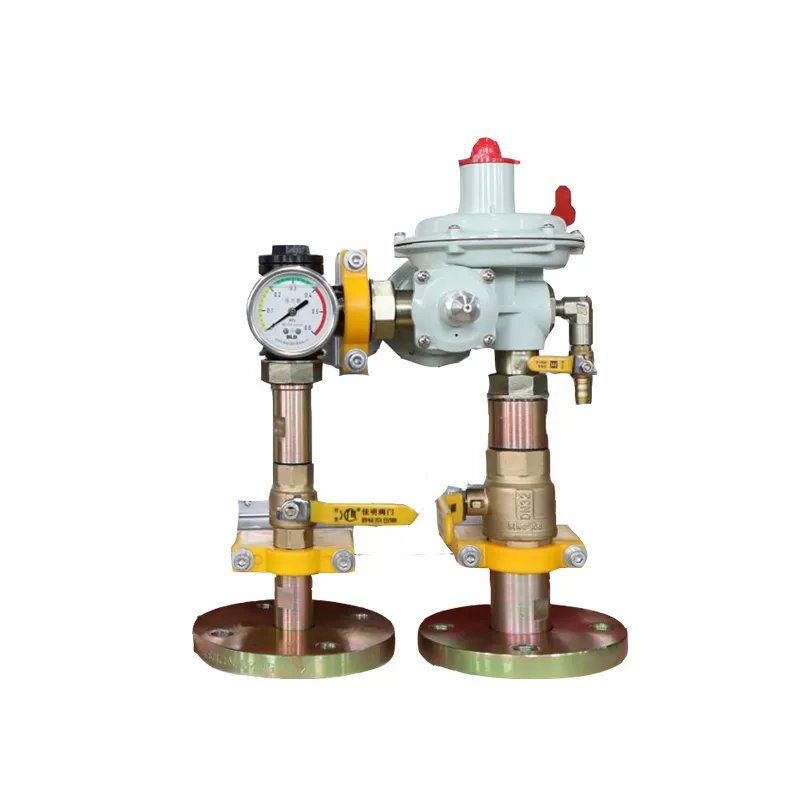
Dec . 23, 2024 12:32
Back to list
cyclone separator
The Cyclone Separator An Overview of Its Functionality and Applications
The cyclone separator, also known as a cyclone dust collector, is a vital piece of equipment used in many industrial applications to separate particles from a gas stream. Its design, efficiency, and economic viability make it a popular choice for industries such as cement, mining, pharmaceuticals, and food processing. This article delves into the functionality, design, working principles, and diverse applications of cyclone separators.
Functionality of Cyclone Separators
At its core, a cyclone separator operates based on centrifugal force. When a gas stream containing particulate matter enters the cyclone, it is forced into a spiral motion. This motion generates centrifugal forces that push heavier particles to the outer walls of the cyclone. As these particles cannot overcome the inertia of the spinning air, they are thrown against the walls and subsequently flow downward into a collection hopper. Cleaner gas, containing fewer particulates, exits the cyclone through a central outlet at the top.
One of the key benefits of cyclone separators is their ability to efficiently handle large volumes of gas without the need for extensive filtration systems. They can operate effectively in high-temperature and high-pressure environments, making them suitable for a wide range of industrial processes. Moreover, cyclone separators require minimal maintenance, contributing to lower operational costs.
Design and Components
A cyclone separator’s design may vary depending on its specific application; however, most cyclones have several common components, including
1. Inlet This is where the dirty gas enters. The inlet is designed to create a tangential entry, enhancing the rotation of the gas stream.
2. Cylindrical Section The gas travels down the cylindrical section of the cyclone, where the centrifugal force increases.
3. Conical Section After the cylindrical section, the gas enters the conical section, where it continues to spin and the flow is reduced in cross-section, accelerating the separation of particles.
4. Dust Collection Hopper This is at the bottom of the cyclone, where separated particles accumulate and are periodically removed.
5. Outlet Cleaner gas exits through the outlet at the top, often equipped with a discharge valve.
cyclone separator

Working Principle
The working principle of a cyclone separator is predicated on the dynamics of fluid mechanics. When the gaseous mixture enters the cyclone through the tangential inlet, it takes on a spiral motion, creating centrifugal forces. Due to the differing masses of the gas and particulate matter, the heavier particles are flung outward, colliding with the cyclone walls. These particles then slide down due to gravity and are collected in the hopper.
As the gas continues to rise within the cyclone, the movement slows down, and the lighter, finer particles may exit at the top with the cleaner gas. The efficiency of collection is influenced by several factors, including the velocity of the gas, particle size, and the cyclone’s dimensions. Typically, cyclone separators can achieve collection efficiencies between 85% to 99%, depending on their design and operational conditions.
Applications of Cyclone Separators
Cyclone separators are widely employed in various industries due to their effectiveness and reliability. Some common applications include
- Cement Manufacturing Cyclones are used to collect dust from the air during the grinding and blending of raw materials.
- Food Processing In food production, they help separate flour or grain dust from the air.
- Mining Cyclone separators are utilized to separate ore from waste material and reduce emissions.
- Pharmaceuticals These separators ensure the cleanliness of the air in production facilities by filtering out particulates.
- Waste Management Cyclones are employed in many waste incineration plants to capture ash particles.
In conclusion, cyclone separators are crucial for maintaining air quality and improving efficiency in numerous industrial processes. Their simple design, minimal maintenance requirements, and effective performance make them indispensable tools in managing particulate emissions. As industries continue to seek ways to enhance productivity and comply with environmental regulations, the importance of cyclone separators is likely to increase in the coming years. Understanding their operational principles and diverse applications can lead to more innovative designs and improved performance in dust collection systems across various sectors.
Latest news
-
Safety Valve Spring-Loaded Design Overpressure ProtectionNewsJul.25,2025
-
Precision Voltage Regulator AC5 Accuracy Grade PerformanceNewsJul.25,2025
-
Natural Gas Pressure Regulating Skid Industrial Pipeline ApplicationsNewsJul.25,2025
-
Natural Gas Filter Stainless Steel Mesh Element DesignNewsJul.25,2025
-
Gas Pressure Regulator Valve Direct-Acting Spring-Loaded DesignNewsJul.25,2025
-
Decompression Equipment Multi-Stage Heat Exchange System DesignNewsJul.25,2025

